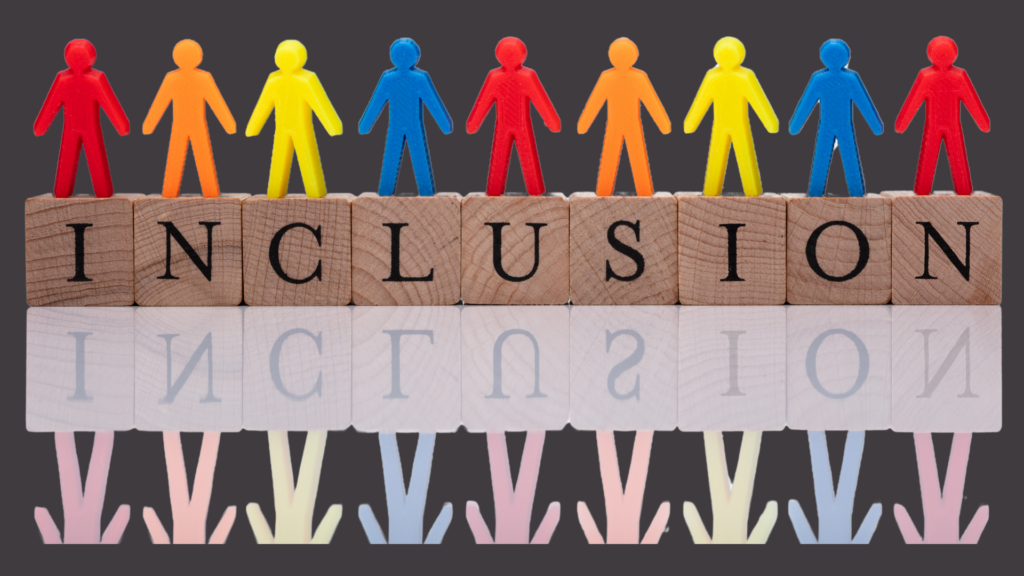When you think of an inclusive workplace, what pops into your head first? Do you think about having different kinds of people working together, everyone getting along, or everyone having the same chances? How do you describe a workplace where everyone feels included?
Last week, we delved into a critical discussion during our webinar on ‘When Intersectionality and Toxic Behavior Intersect: Managing Toxic Behavior in Relation to Race, Sex, and Gender.’ We had a serious talk about how these issues can overlap, and how to handle them better. The goal was to understand and manage toxic behavior in a way that respects everyone’s background.
In the workplace, it’s not just having different folks – it’s about making sure everyone feels happy and valued, like they really belong. One way to achieve this is by encouraging open conversations about our differences. By learning about each other’s backgrounds and unique qualities, we create a more understanding and supportive environment. This helps us appreciate the strengths that each team member brings to the table, fostering a sense of unity.
Research indicates that workplaces fostering a sense of belonging experience remarkable outcomes. These include a sixfold increase in the likelihood of generating innovative ideas and a twofold increase in achieving financial objectives. Moreover, employees who perceive the workplace as an environment where they can authentically express themselves exhibit a 42% decreased likelihood of contemplating a job change within a year. Essentially, a workplace characterized by heightened inclusion and contentment among its employees translates into superior business performance.
Leadership that Sets the Tone
The leaders in our workplace play a crucial role in shaping the atmosphere. Inclusive leadership means that those in charge actively involve everyone and make sure all voices are heard. When leaders prioritize inclusivity, it sets a positive example for the entire team. Employees feel more comfortable expressing their ideas, and collaboration becomes a natural part of the work culture. In essence, friendly bosses create a ripple effect, encouraging inclusivity at all levels of the organization.
Good leaders at work are like friendly guides who make everyone feel included and heard. They set a positive example by making sure everyone is part of the team. When leaders are friendly and inclusive, it encourages everyone in the organization to be the same. It’s like throwing a stone in water – the effect ripples out, making everyone feel comfortable sharing ideas and working together. But good leadership isn’t just about being friendly; it’s also about giving clear directions. Leaders who explain where the team is going and why create a roadmap that helps everyone understand their role. This makes the team work better together towards common goals. So, good leaders not only include everyone but also show the way forward in a simple and inspiring manner.
Let’s talk about some simple ways to make this happen!
Learning and Tolerating Each Other’s Differences
Start by helping everyone understand each other better. We can do this by having chats and learning about different backgrounds. This helps us see the cool things each person brings to the team.
Inclusive Bosses Lead the Way
The people in charge (bosses and leaders) need to be good at including everyone. This means they listen to everyone’s ideas and make sure everyone feels like they belong. When leaders are good at this, everyone else follows their lead.
Groups Where Everyone Fits
Making groups where people with similar interests can hang out is a great idea. These groups can be about anything – like hobbies or where you come from. It’s a cool way to make friends at work!
Rules That Treat Everyone Fair
Making sure the rules at work treat everyone the same is really important. This includes things like hiring and promotions. We want to make sure everyone has a fair shot at doing well.
Making Everyone Feel Like Family
Lastly, we want work to feel like a big family. We do fun things together, celebrate each other’s successes, and support each other when things get tough. This helps us feel connected and happy at work.
Making a workplace where everyone feels good is something we all need to work on. By learning about each other, having leaders who include everyone, joining cool groups, having fair rules, and making work feel like a big family, we can create a workplace where everyone belongs. And when everyone feels welcome, we all do better!
We Walk the Talk
Here at Civility Partners, we don’t just talk about inclusivity – we live it. In our workplace, practicing and promoting inclusivity are a fundamental part of our culture. We actively embrace diversity, value every team member’s unique contributions, and work towards creating an environment where everyone feels respected, heard, and truly included. It’s not just a concept for us; it’s a daily commitment to fostering a workplace that celebrates the strength found in our differences.
Ever wondered how you can transform your workplace into a more inclusive and welcoming environment? Visit our website now. We offer comprehensive training programs to equip you with the skills and knowledge needed for a positive workplace transformation. Let’s build a workplace where everyone feels welcome, diverse, and included – a culture that benefits us all!
Written by: Jennifer Areola



